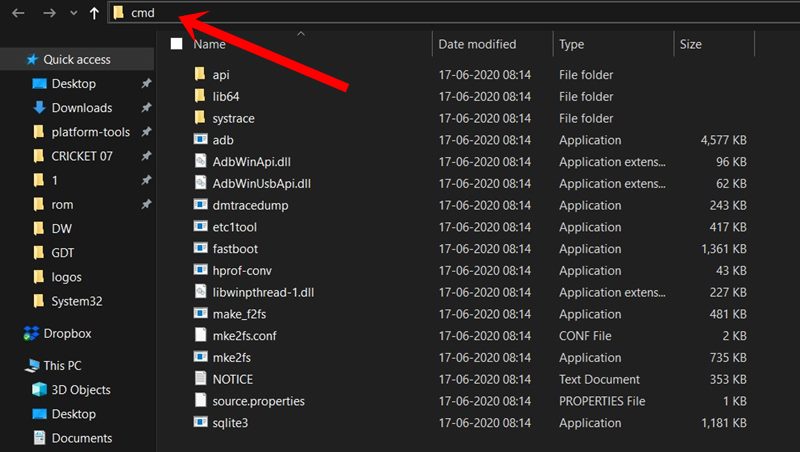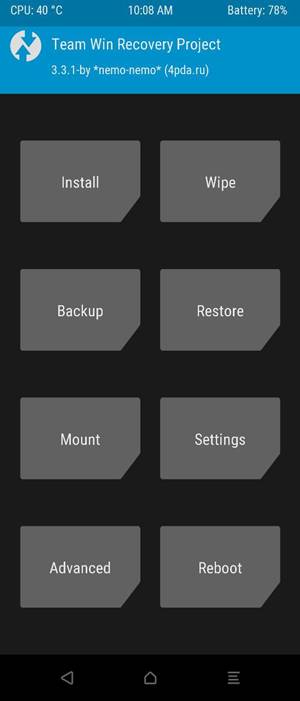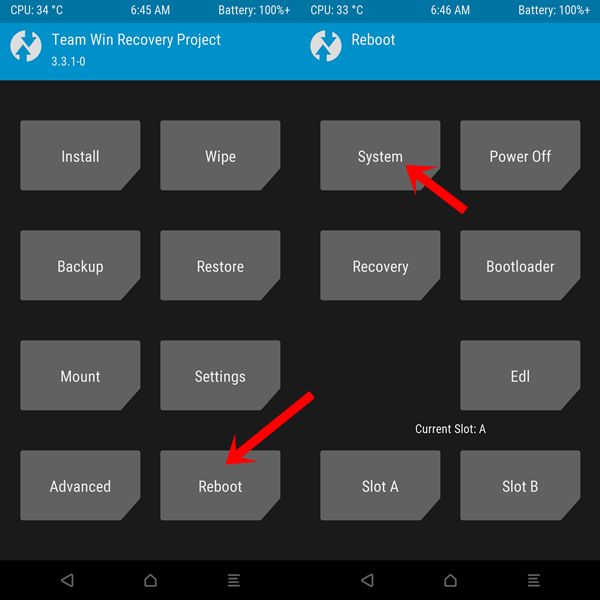Xiaomi Poco F2 Pro (codenamed: lmi) launched in May 2020. The handset came with Android 10 and was later upgraded to Android 11. On this page, we will guide you to install the unofficial Android 13 Custom ROM on Poco F2 Pro. If you are someone who wants to install the vanilla version of Android 13, then this guide is for you.
Poco F2 Pro is one of the flagship devices from Xiaomi that has been launched in May 2020. It runs on MIUI 11 based on Android 10 out-of-the-box. It packs Snapdragon 865 SoC, a 6.67-inches Super AMOLED display, a pop-up selfie camera, up to 8GB/256GB storage, 64MP quad rear cameras, and an in-display fingerprint sensor, 4700mAh battery with 30W quick charging, and more.
Also Read

Page Contents
Xiaomi Poco F2 Pro Overview
The POCO F2 Pro looks identical to Redmi K30 Pro, and the is almost similar in terms of hardware as well. The POCO F2 Pro has the Qualcomm’s latest 5G processor Snapdragon 865 coupled with highspeed LPDDR5 RAM of 6 to 8 GB, and the top-end 256 GB variant comes with ultrafast UFS 3.1 storage option. It has a powerful Adreno 650 GPU alongside a new liquid cooling 2.0. On top of that, the phone also features a 3.5mm headphone jack as well.
The phone has an aluminum frame with a glass body at the back, which is protected by Corning Gorilla Glass 5. POCO F2 Pro has 6.67 inches of 1080p super AMOLED screen, which also happens to have HDR10+ certification. The screen has an aspect ratio of 20:9 and comes with a pixel density of 395 Pixels per inches (PPI). It has an in-display optical fingerprint scanner. The front camera is a pop-up mechanism so, there’s no distraction on the screen, and the screen-to-body ratio is around 87%. The screen is also protected by Corning Gorilla Glass 5.
The POCO F2 Pro runs Android 10 on top of MIUI 11 out of the box. It has its own POCO launcher as well. The phone has a dual sim option as well. The battery is around 4700 mAh, which can be fully charged from 0-100% in about 63 minutes from the proprietary 30w charger that comes within the box. It weighs around 219 grams. The phone is IP53 splash-resistant, meaning you cannot dunk in the water in any way.
As far as the camera is concerned the POCO F2 Pro features a quad camera setup consisting of a 64 MP main camera, then 5 MP telephoto Macro lens, which is followed by a 13 MP ultrawide lens with a 123° field of view and at the end there’s a 2 MP depth sensor. It has a DUAL-LED dual-tone flash along with HDR support. The phone can record 8K video at 24 or 30 fps and 4K at 60 fps along with 1080 at 30/60/120/240fps. The phone also has a slo-mo video recording option, which records at 1080p@960fps. POCO F2 Pro features a gyro-based EIS for the stabilization of videos. On the front, POCO F2 Pro sports a massive 20MP pop-up camera. The front camera also sports 120fps slow-motion video recording capability.
The phone has WIFI 6 dual-band and Bluetooth 5.1. It also packs a dual-band A-GPS and NFC for payments using Google Pay. POCO F2 Pro has all the necessary required sensors like proximity, gyro, compass. The phone has been launched for 499€ and comes in Neon Blue, Phantom White, Electric Purple, and Cyber Gray color options.
Android 13 and Its Features
Google has finally started rolling their stable Android 13 update to the public. As expected, only Google has released the update to their Pixel lineup, but no OEM has started cooking a stable yet.
Regarding the Android 13, it seems that the Android 12’s successor has plenty of additional features and improvements to its predecessor. We’ve already seen and used the major UI and design element changes in Android 12 last year, known as ‘Material You.’ This materialistic theming design enhanced the Android user experience from the minimal subtle look, rounded corners, improved pop-ups, etc.
Whereas the improved scrolling screenshots, optimized one-handed UI mode, better privacy & security features, improved app notifications, per-app basis language preferences, app permissions to send notifications, BT LE Audio support, auto theme icons, updated now playing widget, etc. Users will also find intuitive QR scanner support, enhanced silent mode, tap-to-transfer media controls, multiple profiles for NFC payments, and more.
What’s Working and Known Bugs:
Whats working? Wi-Fi RIL Volte Mobile data GPS Camera Flashlight Camcorder Bluetooth Fingerprint FM radio Sound vibration Known issues ? You tell me
How to Install AOSP Android 13 on Poco F2 Pro (lmi)
As the title suggests, we’ve shared the requirements and steps to flash the AOSP Android 13 build on the Poco F2 Pro (lmi) variant.
Before heading over to the guide, make sure to follow all the requirements below.
Pre-Requisites
Before we begin with this procedure, I would strongly recommend you create a backup of your device storage and all your files stored on your device. Moreover, following the steps mentioned in this post carefully is advised to avoid permanent damage or bricking your device.
Charge Your Phone
It’s highly recommended to charge your handset before unlocking the bootloader to avoid your device from shutting down occasionally while going through the process. Make sure to keep at least 50% of charge or higher for a smooth operation.
Download ADB and Fastboot Binaries
You can skip this adb and fastboot part if you have already installed TWRP Recovery on your Poco F2 Pro.
Using the ADB and Fastboot command (platform-tools), you’ll be able to boot your Android device into the bootloader mode (download mode), which will be easy for you to proceed with further steps. ADB (Android Debug Bridge) creates a connection or bridge between the device and computer to sideload files.
Fastboot is a more advanced command utility tool for Android devices that works with computers. You can download ADB and Fastboot Binaries (Platform-Tools).
Download Xiaomi USB Drivers
A USB Driver is a set of files that allows you to create a successful and strong connection between a mobile device with a computer properly using a USB data cable. It’ll be useful to transfer files between the connected devices, flash files on the handset, and more.
It’s also worth mentioning that mobile devices and other external devices can use and run USB Drivers on a Windows computer. Such as a mouse, keyboard, printer, external hard drives, speakers, USB flash drives, etc. You can grab Xiaomi USB Drivers here.
Unlock Bootloader Your Phone:
You must first unlock the bootloader on your Poco F2 Pro to enjoy any custom ROM.
Install TWRP Recovery:
You must install TWRP Recovery on your phone to install any custom ROM on your device. After unlocking the bootloader, follow our guide to install TWRP Recovery on your Poco F2 Pro.
Download Android 13 ROM:
Here, you will find all the Android 13 custom ROM for your Poco F2 Pro (lmi).
| CrDroid OS | XDA Development Page |
| SparkOS | XDA Development Page |
| Pixel Experience ROM | XDA Development Page |
Download Android 13 Gapps:
It’s worth mentioning that most of the third-party AOSP (Android Open Source Project) ROMs (also known as aftermarket firmware) come without any preinstalled Google apps package. You can manually install the Android 13 GApps by following our guide.
Warning!
GetDroidTips won’t be responsible for any issue that may happen to your device if you flash it on another device and brick it. Do it at your own risk.
Instructions to Install:
- Connect your device to the PC via USB cable. Make sure USB Debugging is enabled.
- Then head over to the platform-tools folder, type in CMD in the address bar, and hit Enter. This will launch the Command Prompt.

- Execute the below command in the CMD window or enter recovery mode by using the Volume and Power button combination. your device to TWRP Recovery:
adb reboot recovery
- Now head over to the Install section and navigate to the downloaded vendor and firmware. Perform a right swipe to flash it.
 TWRP Home
TWRP Home - If you want Google Apps as well, then you need to flash it at this instance itself. Go to Install, select the GApps ZIP file, and perform a right swipe to flash this file.
- When that is done, you may reboot your device. Head over to Reboot and select System.

Your device will now boot to the newly installed OS. With this, we conclude the guide on installing the AOSP Android 13 on Poco F2 Pro. Remember that the first boot might take time, and you might have to set up your device from scratch.
Conclusion
Flashing the ported Android 13 on your Poco F2 Pro will give you an early taste of the latest Android OS version. It looks like the Poco F2 Pro model won’t officially receive the Android 13 update from the manufacturer. So, it’s a good idea to get most of the features and visual treatment. However, if you find any extra bugs or stability issues, you should report them to the respective forum.
That’s it, guys. We assume this guide was helpful to you. For further queries, you can comment below.

Another shitty generic crap.